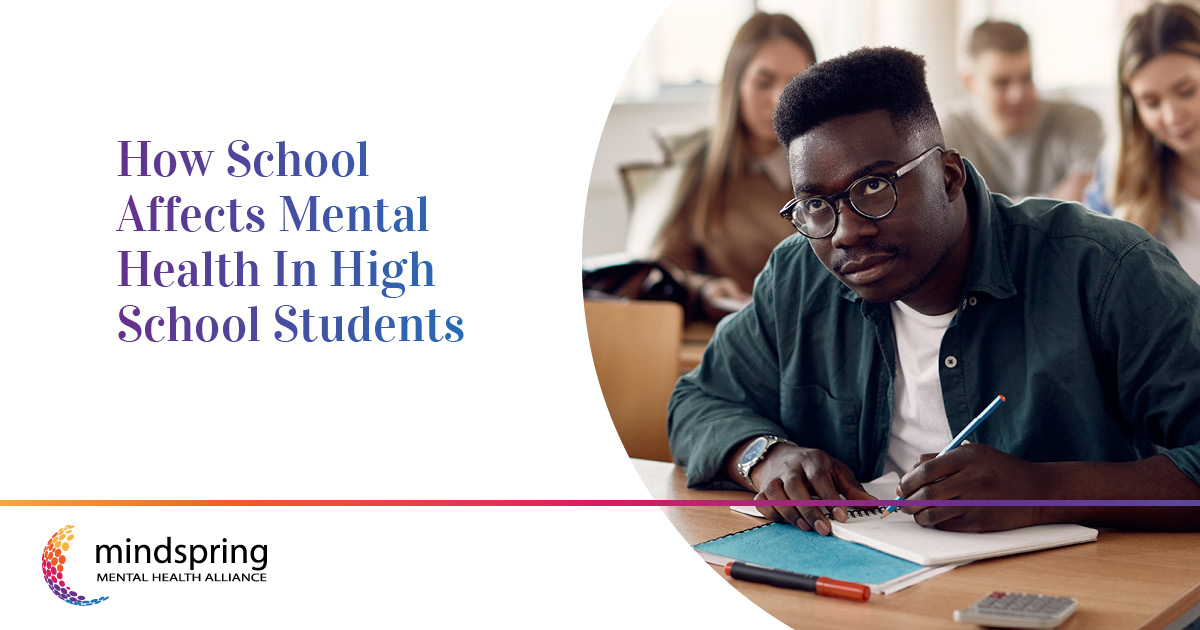
How School Affects Mental Health In High School Students
May 2, 2022
Recent data from the CDC provides insight into the young minds impacted by the COVID-19 pandemic, revealing more than a third of high school students reported experiencing poor mental health during the pandemic. Unfortunately this is just one startling statistic amongst a decade-long trend of declining mental health in adolescents. It’s clear students are in crises, but the CDC didn’t just bear bad news—there’s a silver lining.
The good news: students who felt supported and cared for at their schools during the pandemic were almost 20 percent less likely to report repeatedly feeling sad and hopeless. This tells us schools are uniquely positioned to come to the aid of their students, so now more than ever it’s important to provide mental health support in schools.
Why Is Mental Health Important For Students?
According to the National Alliance on Mental Illness, half of all mental health conditions manifest by age 14. Identifying mental illness and developing healthy coping skills at an early age can impact an adolescent’s entire adulthood. Prioritizing mental health is paramount in order to grow.
Unfortunately, school itself can sometimes be a major stressor in a student’s life. A 2021 public health advisory issued by the U.S. Surgeon General identified bullying, academic pressure, and missing out on educational opportunities as just a few examples of how school affects mental health. Instead of learning, making friends, and finding their place in the world, poor mental health in high school students may make it difficult to focus in class and cause them to act out and withdraw from others.
In the same advisory, the U.S. Surgeon General called on educators to step up however they can to provide support and mental health resources for high school students.
Mental Health Support In Schools
Though the growing focus on mental health in high school students signifies change, potential solutions aren’t always clear to school districts aiming to address the issue. In the Child Mind Institute’s “The Impact of the COVID-19 Pandemic on Children’s Mental Health” 2021 report, less than half of the schools surveyed shared their school or district was prepared to handle emotional issues amongst their students, such as economic hardship, anxiety, acting out, trauma, etc. More than a third felt they were somewhat prepared, but that’s still a long way from ready to take the necessary actions to improve mental health in schools.
According to the Morgan Stanley Alliance for Children’s Mental Health, educators returning to in-person learning during the pandemic reported a desire for more training in how to actively support students with emotional/behavioral challenges, identify these students, and locate external resources for these students. Knowing what’s missing as educators to help shape young minds is a great start to seeking improvement for mental health support in schools.
To be able to take appropriate action as needed, educators must keep an open mind and be willing to learn best practices to integrate mental health support in their schools. Adaptability and empathy for all can go a long way in the school system.
How To Improve Mental Health In Schools
P - We know educators care about their students and have already had to adjust to so many changes over the past couple of years. But the reality of the mental health burden facing high school students means there’s always more that can be done, and there are several critical improvements schools can make right now, according to the U.S. Surgeon General.
Learn to recognize signs of mental health distress in students and when to take action.
As we shared earlier, educators have a prime position in a student’s life to pay attention to their social and academic development. If a teenager withdraws from teachers and peers or shows a drastic change in academic performance and/or behavior, educators can take that next step to speak with the student and potentially refer them to a school counselor or nurse who is better equipped to help.
Foster a positive, safe environment for all students.
Enforcing anti-bullying policies, encouraging inclusivity, and actively educating students and their families about mental health sets the tone for a positive environment where students can feel safe. Students spend 180 days in the classroom every school year—establishing a feeling of belonging within the school is essential.
Prioritize students with higher needs or those with higher risk of mental illness.
Poverty, trauma, disabilities, and personal/family mental health challenges are just a few factors that put certain teenagers at higher risk for mental illness. Pay particular attention to those in the classroom who are already at risk.
Thankfully, educators seeking change within their schools don’t have to do it alone. The right resources can help guide you toward revitalized mental health support in schools.
Mental Health Resources For High School Students
If you’re an educator or school administrator still feeling stuck or wanting to implement lasting changes, there are hundreds of resources devoted to improving mental health support in schools. Here, we’ve identified a few mental health resources you can utilize to get started providing support for high school students.
Concerned How School Affects Mental Health For Iowa High School Students? Contact Mindspring.
There might not be one simple solution to how to improve mental health in schools, but identifying the resources to help your school make a difference plants the seeds for success. At Mindspring, we work with individual Iowans impacted by mental illness as well as families, workplaces, and the community at large. Much like yourself as an educator, our goal is to empower those we work with through education and support. Contact us online, call our office at 515-277-0672, or send an email to support@mindspringhealth.org to learn more about how we can help you create lasting change for students.
Back